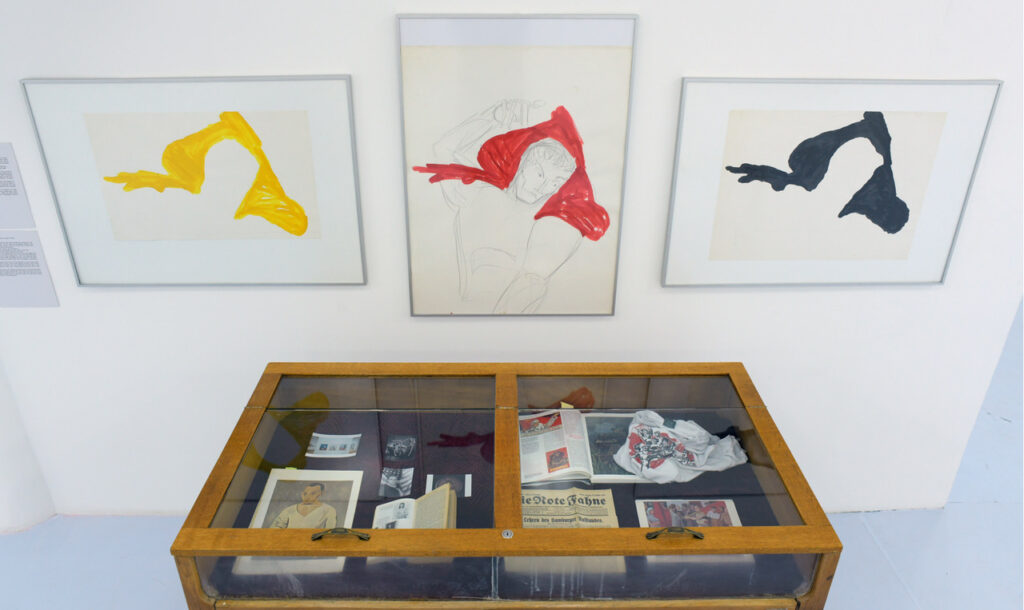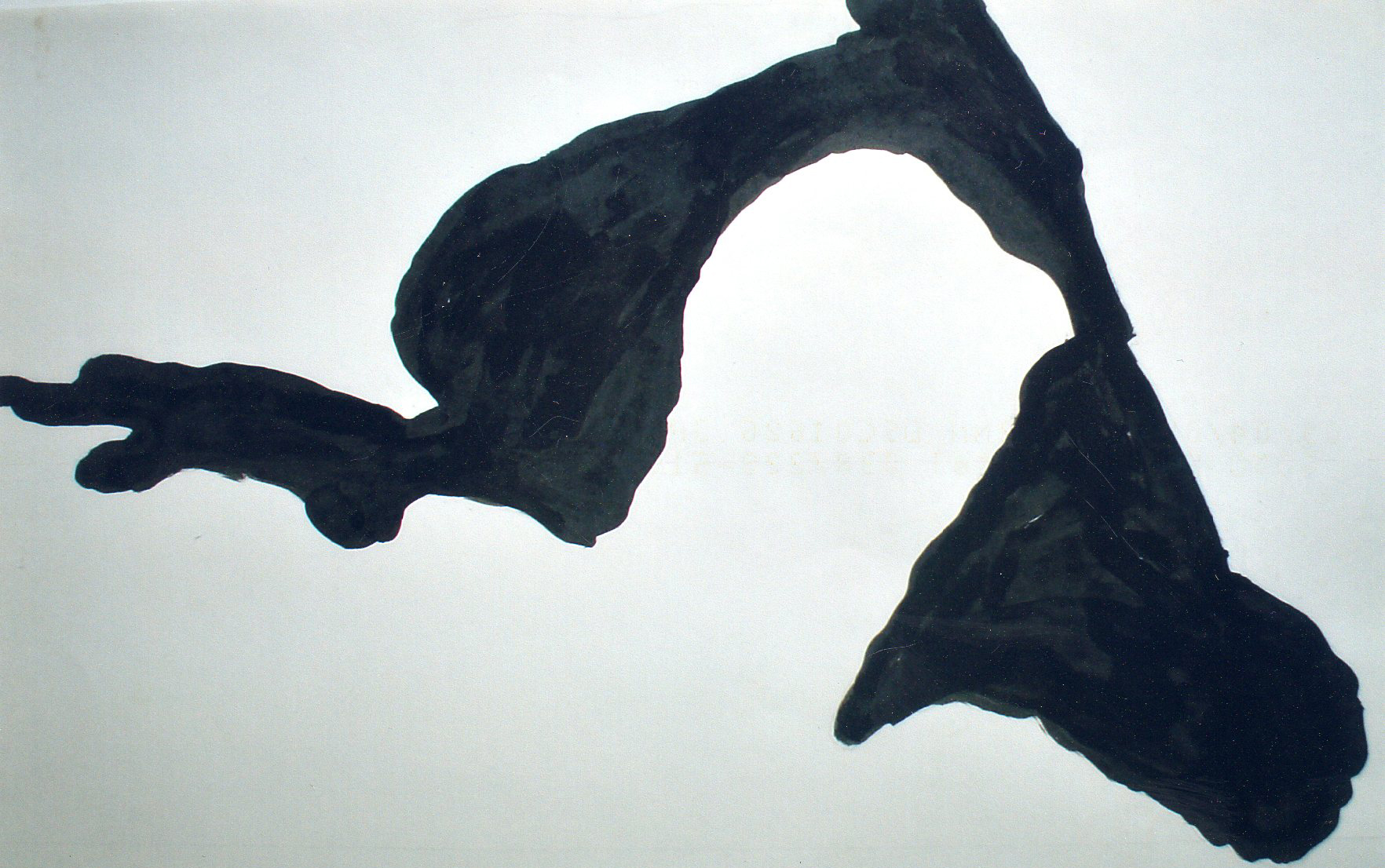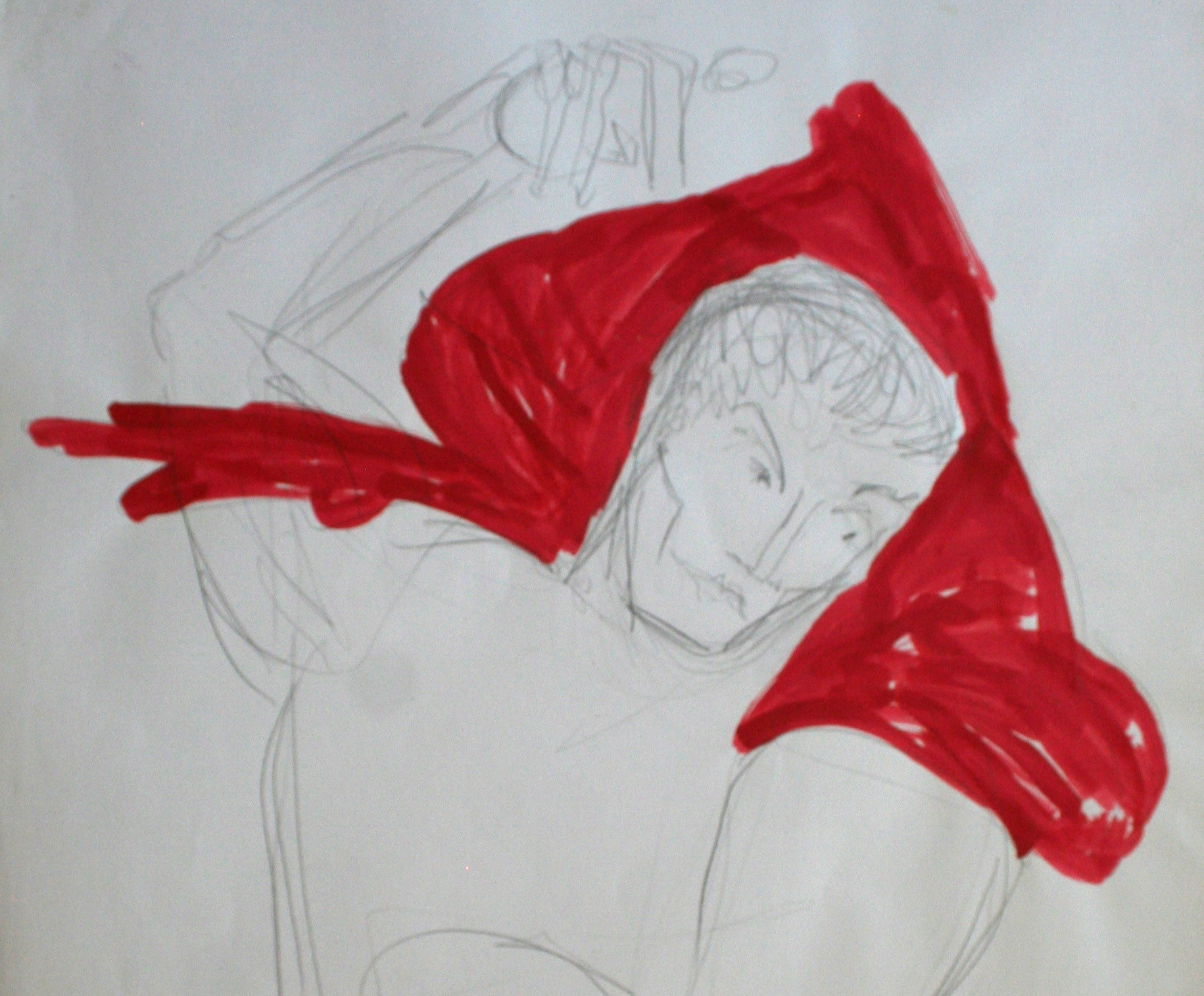Ngjyrat /Colors, Triptych, 1985, acrylic on paper, 70×100 cm, FILOART
It could be like a painted board with holes through which peo- ple put their heads and take photos. Or like those old newspa- per albums, with pictures of clothes that children could cut out and use to dress their favorite cartoons. But this is not the case. Yellow, red and black or black, red and yellow or…
Three different colors, and (almost) the same motif in each work.
The background colors (Flags) change in each work.
But what happens in the foreground? In the work with a red background we can observe a man with a raised hand. In the other two (yellow and black) we have only a rough silhouette of a man. If we observed these two works (yellow and black) separately from the work with a man with a red flag, then these two works would look, like abstract monochrome works.
If we would observe these works chronologically we would have some kind of narrative: before, now and after. Before and after could be both colors: yellow and black, red could symbol- ize now. But what is the sequence/order? Which color is before (past) and which color is after (future)?
In the work with the red background (flag) we can notice one interesting detail. While the flag is painted (like in the other two works), the man is drawn with a graphite pencil. This same motif, and some other motifs could also be drawn also on the two other works. He could also be easily erased from the red background.
- Colors, FILOART, 1985, “This is not en Exhibition but the opposite of it” Youth Palast “Boro and Ramizi” Prishtinë, 1987

Colors, FILOART, 1985, “This is not en Exhibition but the opposite of it” National Gallery of Kosova, 2019


